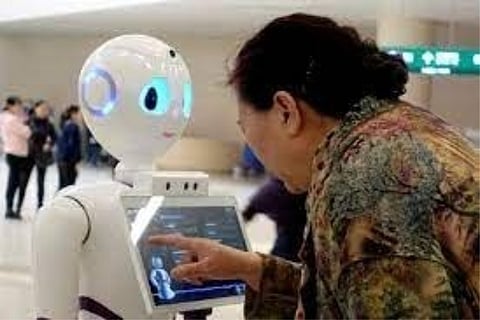

Mumbai
Apart from their talent and quick reflexes, what also helps them is extra-reinforced wheelchairs that they use, which have a backrest and extra caster wheels at the rear to allow players to move freely and twist or lean backward without tipping over.
The backrest helps them return a smash and keep rallies going as they compete to win each point. Para-badminton is making its debut at the Tokyo Paralympics, starting next week.
It's not only in the wheelchairs, technology has had an impact on other para-sports too over the years. From prosthetics to carbon blades, carbon fibre wheelchairs, and assisted devices, all improved over the years using innovative technology, will be on display during the Tokyo Paralympic Games that will be held from August 24-September 5.
On the other end of the scale is the wheelchair for para-basketball which is higher than racing wheelchairs athletics and has a bigger push rim between 60-68cm in diametre. With sufficient power, these chairs are easy to maneuvre and change directions quickly and also stop immediately for wheelchair basketball players to move ahead, pick balls and make shots. Wheelchair basketball chairs are also bent 20 degrees to the ground for easier maneuverability.
The seats for wheelchair basketball too have undergone a lot of change and athletes who have lesser mobility in their lower body will have "bucket seats" and higher backrests for stability, the Tokyo2020 Olympic organisers said on their website. For athletes with more mobility, the wheelchairs have another wheel at the back to allow them to lean back as far as they can to make shots.
Along with the wheelchairs, cycling track racing bikes too have become faster and easy to operate because of technology.
Para cyclists, especially those with arm impairments, are allowed to make modifications to their bikes, depending on which hand has more mobility while athletes with leg amputations are allowed to fix their prosthesis to the pedal.
Technology has also helped make the running blades light, springy and compact. The J-shaped prosthetic is made of carbon fibre, strong lightweight material, and helps athletes as they step forward, during a sprint, a vertical lift, or a long jump.
Racing wheelchairs are predominantly made from aluminium but nowadays they are using carbon fibre technology to make them even lighter and more stable. Like other sports, wheelchair seats can be customised to an athlete's body. The wheels on a racing wheelchair have a 10-15 degree camber to add lateral stability when athletes are going at speed.
The chairs for wheelchair rugby are strong enough to withstand impacts and crashes. They are made of aluminium or titanium and could even have five or six wheels depending on the athlete's impairment. The extra wheels not only allow greater stability but maneuverability. The chairs for offensive moves have aluminium metal 'wings' on the wheel while those for defensive moves have a hook on the front part of the chair to trap opponents.
While all this is high-end technology, para-swimmers with vision impairment use a low-end tech like a small pole with a soft-end piece that could be used by the assistants to tap the swimmer on his head or shoulder to inform that he has to turn or he is approaching the wall.
All these innovations and assistive technology will be on display during the Paralympic Games as the athletes battle for medals.
Visit news.dtnext.in to explore our interactive epaper!
Download the DT Next app for more exciting features!
Click here for iOS
Click here for Android